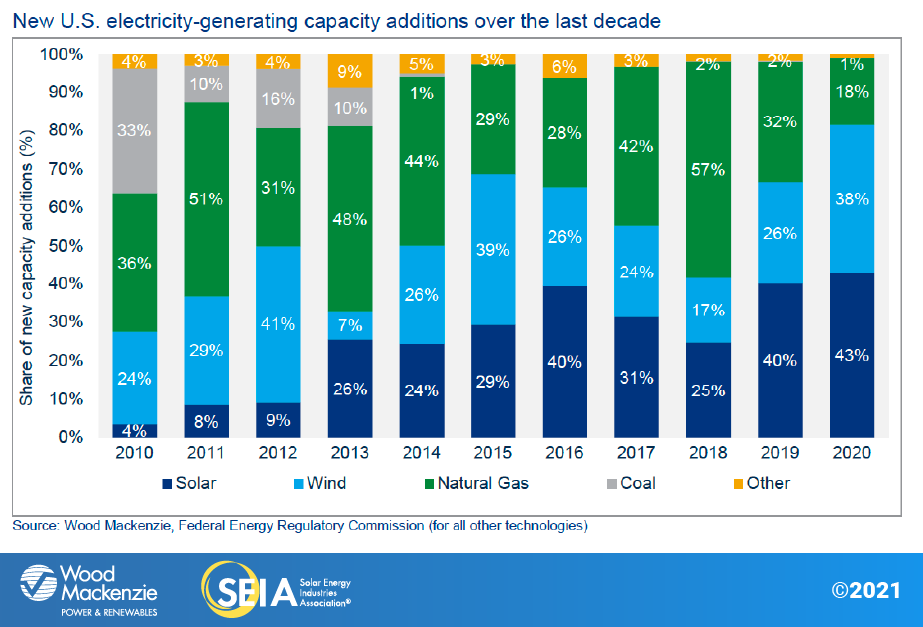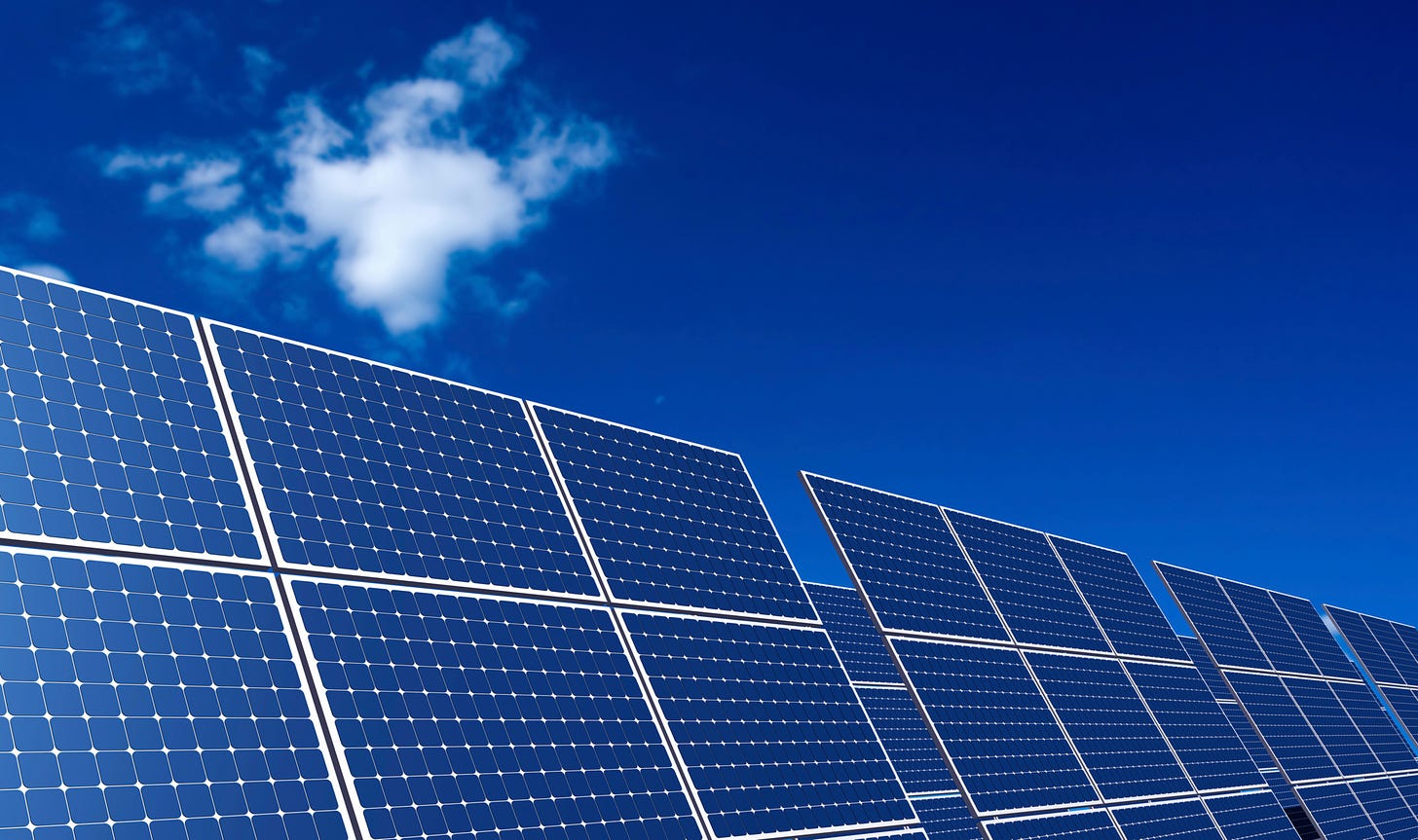While the Covid pandemic and lockdowns slowed economic development across huge swaths of society and industry, American solar development boomed, as evidenced by a Tuesday report from the Solar Energy Industries Association and Wood Mackenzie. At a 43% increase over 2019 installation, the U.S. solar market installed a record 19.2 GW in 2020. That’s enough new solar energy to power over 3.5 million American homes.1
For broader context, total American solar power capacity is close to 100 GW,2 so that means around 20% of the country’s entire current solar capacity was installed last year while the pandemic raged. Installations did suffer during the height of the restrictions, but Q3 and Q4 projects more than made up for lost time with historic increases in capacity through interconnection efforts and utility-scale projects.
These installations were partially motivated by a desire to begin projects by the end of 2020 due to the sunsetting Federal Investment Tax Credit (ITC) for solar, which is a tax credit designed to incentivize solar implementation by making it more economically attractive. The ITC was scheduled to move down from 26% to 22% after the end of 2020 (and eventually 0% for residential/10% for commercial installations in 2022), motivating solar installers to break ground at high speeds to capture the cheaper costs. However, at the end of 2020, the omnibus spending and Covid Relief bill was passed. Among its thousands of pages was an extension for the ITC, maintaining the 26% rate through the end of 2022.
While the previous deadline may have motivated installations in 2020, the new extension is projected to increase installations from 2021-2025 by 17%. This may also be a conservative estimate, considering that, since the original implementation of the ITC in 2006, the solar industry has grown by “more than 10,000%.” To be fair, the exponential growth of solar in the recent decades likely would have happened in some form simply due to advancements in technology and general investments. However, it is clear that the significant tax incentive helped pave the road and likely facilitated solar’s growth to reach the great heights that it has. Setting these trends as our future scaffolding, it follows unambiguously that the ITC extension will promote even more solar growth, as SEIA and Wood Mackenzie project.

Extending our premonitions to this newsletter’s namesake, the forecast for renewables by 2030 is bullish. SEIA projects a quadrupling of solar by the end of the decade. The EIA predicts that renewables as a whole will overtake natural gas in 2030 to become America’s number one source of electricity generation. And this is all to say nothing of global renewable trends, with China reporting almost 50 GW of new solar capacity — that’s half of cumulative American solar — installed in just 2020.
American solar continues its rise, and it will need to if ambitious, necessary climate goals are to be reached. Carbon neutrality by 2050, a zero-carbon electricity grid by 2035, these are the stated goals of our current Presidential administration, and they roughly line up with what the IPCC states is needed to prevent warming above 1.5° C. Such goals still need to be more formally codified, in laws and NDCs and the like, for the U.S. to concretely establish its commitment to the climate fight. Such a fight will have to be “won” largely with the weapons nature has already provided for us: sunlight and wind, Earth heat and water.
And fittingly under the green buttons, Happy St. Patrick’s Day! Eat good food (and whiskey) and be merry.
Enough to power almost 18 million American homes



